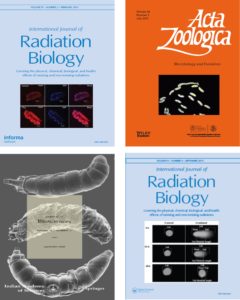The discipline of stress biology is changing rapidly, mostly to tackle pertinent issues of environment impacted by global climate change and increasing imbalance of humidity and temperature. In this context, the threat perception of aquatic biota is more potent than its other counterparts. Environmental stress biologists, therefore, are paying much-needed attention to issues like desiccation, hypoxia, temperature alterations and so on. However, biological and ecological complexity of aquatic biota impede our understanding of homeostatic mechanism because each organism responds to stressors differently. The present generation of stress biologists are required to address larger questions and sort out synthetic scientific answers. Technical advances unthinkable in the past decades are generating large volume of information thereby making the discipline of stress biology challenging and multidisciplinary. The Stress Biology Research Group comprising of researchers, students, fellows and collaborators organized themselves in an interdisciplinary team with Bimalendu B. Nath as Principal Investigator, to work on following research areas:
Areas of research interest of Stress Biology Research Group:
- Role of extracellular hemoglobin of Chironomus in homeostatic regulation of abiotic stress and tolerance: Cellular, molecular, biochemical and biophysical studies.
- Desiccation stress biology: Chironomus and Drosophila as model systems using multidisciplinary approach.
- Tolerance of chironomid midges to ionizing radiation and hypoxic stress.
- Role of chironomid midge microbiome in maintaining homeostasis under environmental abiotic stress conditions.
- Cytogenetics and population genetics of Indian chironomid midges.
- Identification of whole-organismal behavioural stress-biomarkers in Chironomus.
- Biodiversity and evolution of chironomid midges: Investigation using chromosomal, molecular and bioinformatics tools.
Most of the abiotic stress biology studies have been carried out under simulated and/ or controlled laboratory conditions in various model organisms, which do not reflect the actual scenario that prevails in the natural population of an organism. Therefore, the Stress Biology Research Group is engaged in reducing this gap between laboratory population versus natural population by combining field and laboratory-based studies in Chironomus.
